“Without casting any aspersions on the naturalist for having retained her for such an arduous voyage, I want to give her all the credit for her bravery, a far cry from the gentle pastimes afforded her sex. She dared confront the stress, the dangers, and everything that happened one could realistically expect on such a voyage. Her adventure should, I think, be included in a history of famous women.”
How does a young woman of about 24 years of age end up as a botanist’s aide on a French naval ship in 1766? During the voyage Jeanne sees a world that no peasant girl would ever think to imagine filled with wondrous lands,fascinating marine animals and unknown plants that she collects on behalf of the king. She faces great humiliations, physical labour bordering on slavery and rape. Hers is an amazing and yet difficult story to hear, but unfortunately we never hear from Jeanne directly about her adventure and must rely on the journals of others.
Jeanne was born to peasant parents in Autun, France in the Loire Valley. They were illiterate laborers who took any field work available such as sowing, tending and harvesting crops and other plants. Jeanne grew up in this small farming society where the furthest anyone travelled was only the next town. Somehow she learned to read and write and began the age old profession as an herb woman. Herb women supplied male operated businesses in towns with the roots, seeds, leaves and plants that held curative properties. They supplied druggists, physicians, dentists and male midwives (an eighteenth century development where upper class women chose men to help with the birthing process). Sir Joseph Banks, today one of the most renowned botanists, was not a verse to paying herb women for their knowledge of the plant kingdom. Using herb women as teachers endowed Banks with more knowledge than his contemporaries and brought him eventual fame and wealth.
This is how Jeanne met the older and well–to-do Philibert Commerson, a botanist, who like Banks, wished to learn more about plant properties especially after being bitten in the leg by a dog that was believed to have rabies. That they met and became lovers is only the first of many details I must gloss over. Commerson was married. When his wife died shortly after child birth he gave his son to his brother in law to care for and then installed Jeanne in his house as housekeeper. After moving to the great city of Paris Jeanne became pregnant with his child. Upon realizing that Commerson had no plan to marry her, Jeanne left the baby with an orphanage in Paris. It was in Paris that Commerson received plants via the Jardin du Roi (Garden of the King). Here they both dissected exotic and unusual plants into seeds, leaves and flowers to study. While Jeanne used her herbal knowledge to see similarities between these exotics and her native plants she also picked up some working knowledge of the Linnaean classification system which would help her while out at sea.
In 1765 Commerson’s friends at the Jardin du Roi told him of a three year expedition that the French government was looking at undertaking. The French had just lost their Canadian colony to the English and wished to improve their situation by attempting to find the elusive continent of Australia. This voyage would require circumnavigating the globe. This voyage would also require a renowned botanist to collect flora and fauna with the hope of finding plants that would be commercially viable and prosperous to France. Commerson desired to be part of this expedition as it could bring lasting fame and financial rewards, and it would be his for the asking. But there was a problem – what to do with Jeanne? Women were strictly prohibited from being on board French naval ships. However, he was allowed to bring as assistant to help with collecting and preserving the plant specimens they found. And so a plan was formed: Jeanne Baret would become Jean Baret or Baré.
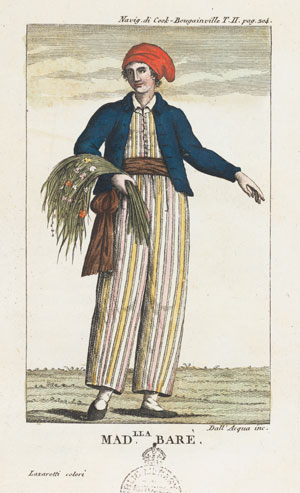
Why Jeanne agreed to this idea is not known. Was it even her idea? Was she so in love with Commerson that she was willing to risk so much? Already we may question her motives remembering her lost child, no marriage, no status, still a peasant girl after all. Perhaps the lure of new worlds and plants to discover was all she desired. Now she was cutting her hair short, dressing in loose drawstring trousers and roomy tunic and binding her breasts to her chest with long bandages. The bandages on their own would make her situation at sea uncomfortable as they restricted her breathing especially when she needed all her breath to climb hills and carry equipment. They also caused dermatitis which must have been very unpleasant during a three year voyage.
Two ships made up the expedition lead by Captain Louis Antoinede Bougainville on the larger ship La Boudeuse and a smaller ship the Etoile captained by Francois Chenard de La Giraudais. ‘Jean’ and Commerson were offered the captain’s quarters upon the Etoile which proved to be a godsend for Jeanne although the intention was to provide enough room for their supplies and future plant specimens. It was not long however into the voyage that there were suspicions about Jeanne’s sex. The other sailor’s on board never saw him using the head to relieve himself, he never undressed in view of the rest of the crew and he carried a loaded pistol. Jeanne faced many difficulties early on including one night when she was forced to sleep with the rest of the crew below deck and needed the pistol to protect herself from assault. Later when crossing the equator all new initiates in the crew were required to undergo a baptism of sorts, usually done in fun. Jeanne, being an assistant to the botanist would be part of this baptism which in her case turned out to be closer to a hazing. Commerson began to realize that he needed to better protect his assistant.
When on land Jeanne had a somewhat easier time away from prying eyes and felt more secure. Her work with Commerson was extremely labour intensive. She became known as ‘the beast of burden’ carrying the days provisions, the pistols, and a field bag in which were optical instruments, papers for pressing specimens,magnifying glass, telescope, compass, and a mesh net to capture insects. Commerson’s bad leg, similar to the oozing ulcers that King Henry VIII endured,would erupt from time to time and the possibility of gangrene was great. This left most of the collecting to Jeanne, who was directed to plants and locations by Commerson as he sat quietly while she climbed along cliffs to procurespecimens. It was on one of these stops that something caught her eye. An evergreen plant in the tropics (they were now in Brazil) with colourful bracts in hues of reds that grows long bean-like seed pods, she found what would be named Bougainvillea after the captain of La Boudeuse. However it would be Commerson to give the plant this name in an attempt to ingratiate himself with the captain of the naval ship. It is thought that Jeanne noticed this plant not for its colourful bracts but rather for the seed pods that resemble beans. As an herb woman she would find a similarity with these beans and beans back in France. The red hues of the flowers would signify a plant that could draw out poisons in the blood while the green and black seed pods represented the necrosis accompanied with gangrene. It is likely she was hoping for a cure for her lover’s leg.
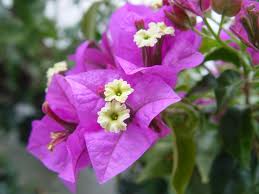
Commerson’s attempt to ingratiate himself with the captain backfired. Bougainville had Commerson arrested for bringing a woman on board. Jeanne was brought in for questioning and managed to placate Bougainville with a story of being a eunuch. While Bougainville did not believe her he allowed the story to spread, partly perhaps to ease her life on the ship but mainly because he would have to keep her on board with a false story to protect himself from being penalized. Jeanne was necessary to the recovery of commercial plant specimens; Commerson was not well enough to do the work alone and finding a capable new assistant was impossible. If the expedition failed Bougainville would have failed in the navy and government eyes.
As they circumnavigated the globe Jeanne worked in heat and humidity and cold almost freezing temperatures collecting plants. The ships encountered bad weather and had much difficulty finding places to dock where they could restock with water and food. The latter part of the trip they were all on starvation rations and not in the best of mood. They found Tahiti in April of 1768.
Here there are discrepancies between the various journals of Bougainville, Vives (the doctor on the ship) and two others. Bougainville claims that the discovery of Jeanne’s true sex was made in Tahiti while the three other journals point to the island of New Ireland. It is clear that something bad happened to Jeanne on New Ireland and while not specifically mentioned in the journals rape is the most likely event. It is known that Commerson treated Jeanne with opiates on that fateful day and that she remained in the cabin for one month thereafter. Seven months later Jeanne and Commerson were released from the Etoile to stay on the island of Mauritius, a French colony. Jeanne was seven months pregnant.
Jeanne did give birth to a boy who was once again given away–not a surprise there, considering the traumatic event the precipitated it. Despite his failed attempt at procuring commercially viable plants for France, Commerson was able to find his way into high society in Maurtius. He and Jeanne continued to work together on new plant findings. One such trip took them to Madagascar where Commerson was intrigued by a shrub, ten feet tall with glossy leaves and profuse white blossoms, and gave it the name Baretia. He believed he had found three distinct species and named them B. bonafida, B. oppotisiva and B. heterophylla. It turns out that the genus has more than 50 species, which have since been renamed and are now placed in the genus Turraea of the family Meliaceae. It is believed he chose this plant to name after Jeanne because it resists easy identification with leaves of different shapes on the same plant.
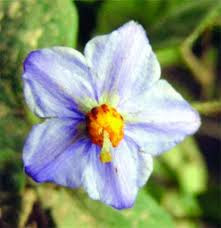
In 2010, a newly described plant species was christened Solanum baretiae in her honor. Biologist Eric Tepe, with the University of Utah and the University of Cincinnati, named the newfound species after hearing about Baret’s unsung work.He thinks it’s what Commerson would have wanted since he had already intended on naming a similar plant after her.
”I have always admired explorers,especially botanical explorers,”
he said.
“We know many of their names, and they all have endured hardships in pursuit of interesting plants, but few have sacrificed so much and endured so much as Baret,”
If you wish to know more about Jeanne Baret I recommend reading “The Discovery of Jeanne Baret” by Glynis Ridley. It is where I found the majority of the research for this post.
“But how was it possible to discover the woman in the indefatigable Baret, who was already an expert botanist, had followed his master in all his botanical walks, amidst the snows and frozen mountains of the Strait of Magellan, and even on such troublesome excursions carried provisions, arms, and herbals, with so much courage and strength, that the naturalist had called him his beast of burden?”
Bougainville
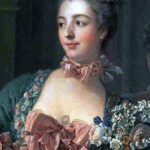
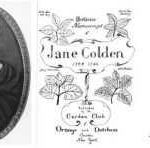
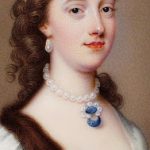
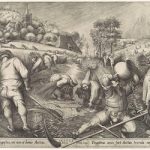
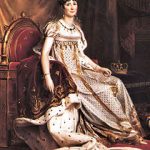
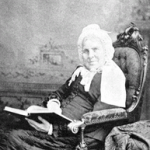
Her dedication to botany is impressive but her lack of attachment to her children is truly sad. I can't imagine going through everything she endured, especially while Commerson sat on his butt. Interesting read! :o) So glad you're back! Yay!
Thanks Casa Mariposa! Apparently at the time giving up your children was not frowned upon so much. Jeanne did not have many options available being so poor. Commerson I think was quite egotistical and was more interested in his wellfare and social standing than he was of taking care of and protecting the woman who lived her life for him.
Patty,I am so behind on reading blogs because my nursery is so busy but I am glad I didn't miss this.You are such an excellent writer and this story is so fascinating.I want to read the book.You should think about collecting your posts into a book, real or virtual.
Thanks Carolyn, It is something I am beginning to think about. I may try to get this published some way, some how.
Such a pleasure to find your blog via Flower Hill Farm. This was a great read and I think you write extremely well. You do need to write that book you have in you.
Gardeningbren: Thanks for taking the time to visit. I hope you will return. I appreciate the kind words too!
A collection of essays – Women and the Garden – by Patricia … ? You could explore e-publishing. Quite a few blogs written around that subject!
Yes, you must publish your writings. Such interesting reading. But sad.
Patty – I often see that opinion, they are only here for the pictures. I don't see it that way. Many of my readers come looking for a picture of … and many leave with a picture, of something quite different! The trick is to hook them in to reading another post. There are always images on my post, and I search for images myself. They want YOUR pictures!
I bought my spigellia locally and from an online nursery called Lazy S. The porteranthus is also available online in bare root form from Prairie Moon. That's where I bought mine. I have links to both of them on my blog on the side near the bottom. Bunnies have munched my asters but have left everything else alone as far as I can tell. :o)
I really was engrossed in this story. If a book, it would be hard to put down. I agree with everyone, your writing is so well done that a publishing deal should be in your future.
Thanks for visiting Beth, and for the kind comment. I hope you will return in the new year.